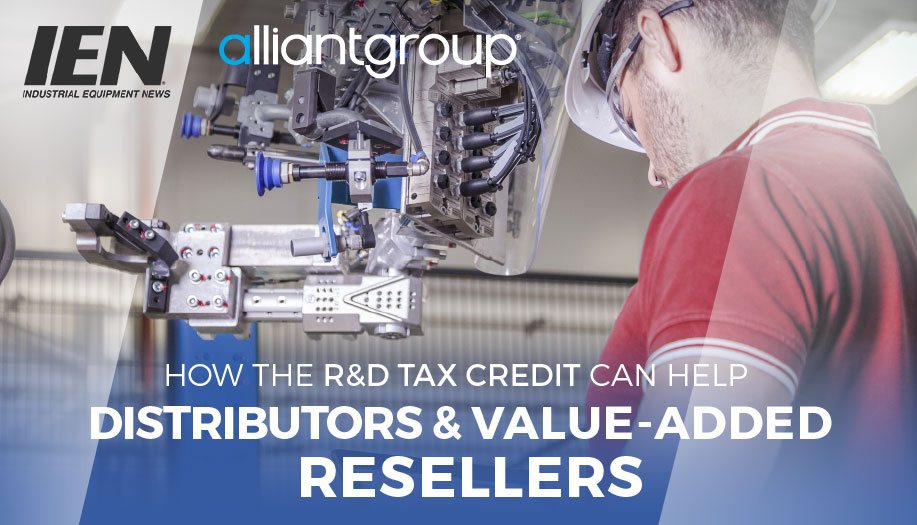Feb. 23, 2017
by Tracy Lustyan, alliantgroup Managing Director
Hydraulics & Pneumatics
It seems like every day another story comes out on the latest and greatest technologies and how they are set to revolutionize the American economy.
In fact, perhaps nowhere has this become more evident than in our nation’s industrial sector, with the advancement of automation and the Industrial Internet of Things (lloT) changing not only the efficiency of American factories, but the very nature of industrial jobs. As automation and system integration technologies continue their takeover of U.S. factories, the need for assembly line workers has been replaced by the need for employees that are capable of designing, developing and running these now largely automated processes.
As those within the industry know all too well, today as well as tomorrow’s industrial jobs will require an even more technical, STEM-oriented skillset. It is an ongoing trend that will only intensify in the coming years—and those businesses unable to attract such workers will face an uphill battle if they wish to remain competitive.
A Tax Break for Your Industry
Recognizing this fundamental shift and the need to modernize the industrial sector and improve their labor force, the federal government offers a major tax break to incentivize the hiring of STEM workers—the Research and Development (R&D) Tax Credit. For those unfamiliar, the R&D Tax Credit has been around for decades, but over the years the credit has become much more taxpayer-friendly, evolving into the premier tax incentive for rewarding innovative companies (such as those found in industrial and automation fields) for keeping high-paying technical jobs here in the U.S.
The R&D Tax Credit: Why it’s Overlooked…
Despite being around since the 1980s, the R&D Tax Credit remains one of the most under-claimed provisions of the tax code, with only an estimated five to 10 percent of eligible businesses actually claiming the credit. In my experience, the reasons for this can be traced back to: 1) a general lack of awareness regarding the credit and 2) a misunderstanding of its core purpose.
…And Why it Likely Applies to Your Business
Simply put, what the average business owner perceives as “R&D” is very different from the tax code’s definition, with many mistakenly tying the credit only to medical or traditional research. In reality however, the credit is also very much about applied research, or rather the technical experimentation and the gradual steps taken to improve a company’s products or processes. As applied to automation and system integration, it is the enhancement of systematic processes that leads to qualification—and often fantastic credit results.
Real-World Value
How valuable can the R&D Tax Credit be for a company?
For four years’ worth of qualifying projects, an industrial automation company specializing in a range of motion control services (including the development of hydraulic and pneumatics systems) received more than $1.1 million in federal and state R&D tax credits.
For a better idea on the kinds of activities that qualify, let’s take a closer look at an individual project that led to this company’s eligibility for the credit.
Real-World Application
Among a long list of qualifying projects, this company went about developing an assembly system for a truck to overcome a customer problem (the issue being that they were unable to appropriately deliver lubrication to the truck assembly). Specifically, the company was tasked with finding the ultimate design for the lubrication delivery assembly in order to automate the system.
To overcome this specific challenge, the company evaluated the system’s connectors and pump, determining that an automated lubrication system installed throughout the truck was capable of addressing issues related to the truck’s performance. The company experimented with 10 different alternate solutions regarding the lubrication system, and through trial-and-error testing, determined that using a Lincoln plate provided the most reliable solution to the customer’s project requirements.
By finding technical solutions to their customer’s problem, by exploring other alternatives, and most importantly, by taking a risk to improve their processes and services in the first place, this company hit all the common checkboxes when it comes to qualifying for the R&D Tax Credit. And due to the broad range of qualifying activities, this business received a result that will allow for massive reinvestment throughout their organization—meaning more money for jobs and better equipment.
The More STEM Workers, the Better the Results
Another factor playing into this company’s successful result—and one that is traditionally common among industrial and automation companies—was the wages of the employees performing these qualifying projects.
As stated before, the whole point of the credit is to reward companies for keeping high-paying STEM jobs in the U.S., and this is exactly why the R&D Tax Credit was designed as a dollar-for-dollar, wage-based incentive. As STEM workers that perform the task of designing, developing and programming these automated systems traditionally have higher salaries, their wages will have the impact of driving up credit results, providing dynamic companies the ability to hire more of these type of workers.
It’s the perfect system to reward companies for both their innovative practices and for keeping the kind of jobs on our shores that will lead to a more competitive economy in the long run—and industrial and automation based businesses would be wise to use it.
Review Now
If any of the above activities or projects sound similar to your company’s line of work, I would highly suggest you explore this opportunity. The R&D Tax Credit could be the perfect opportunity to expand your business.
 Tracy Lustyan is a Managing Director based in alliantgroup’s Chicago office. With Tracy’s guidance, more than 500 companies operating in diverse industries—including software, technology and systems integration—have claimed over $200 million in government-sponsored benefits. Tracy is passionate about government-sponsored tax incentives and the role they play in keeping jobs in the U.S.
Tracy Lustyan is a Managing Director based in alliantgroup’s Chicago office. With Tracy’s guidance, more than 500 companies operating in diverse industries—including software, technology and systems integration—have claimed over $200 million in government-sponsored benefits. Tracy is passionate about government-sponsored tax incentives and the role they play in keeping jobs in the U.S.
Would you like additional information or do you have questions?


